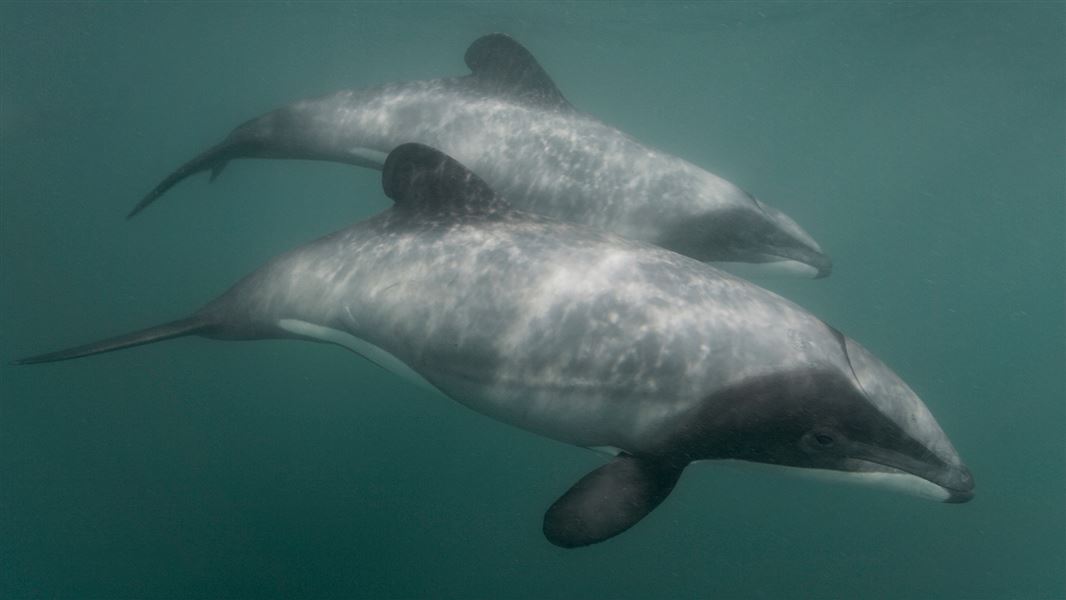Archived content: This media release was accurate on the date of publication.
Date: 21 April 2022
One dead Hector’s dolphin was discovered just south of Greymouth on Monday 11 April, and a second at Tiwai on Saturday 16 April.
Department of Conservation (DOC) Aquatic Director Elizabeth Heeg says the adult dolphin found at Greymouth was very decomposed with only the spine and tail remaining when it was discovered. It would be impossible to say what caused its death.
By the time DOC was alerted to the dead dolphin, the remains could not be found – presumably they had been washed back out to sea.
The Tiwai dolphin also appeared to be an adult and has been collected by DOC staff to send to Massey University for examination.
“Sadly, this makes 14 Hector’s dolphins found dead around the South Island since early November 2021,” Elizabeth Heeg says.
“At this stage we don’t know why we’ve had this many Hector’s dolphins wash up over the past four months. We’re waiting for the remaining necropsy results to understand more about possible causes of death.”
Eight of the recent deaths were calves. A very decomposed and scavenged Māui dolphin was also found at Muriwai, west of Auckland, on Christmas Day but it was not collected.
Twelve of the dolphins have been sent to Massey University. When deceased dolphins are reported and retrieved quickly, they can be chilled and sent to the pathologist.
“They are gradually being examined by the pathologist. We’ve received results from necropsies on four calves, but a definite diagnosis wasn’t possible due to decomposition,” she says.
“Maternal separation, potentially during storm conditions, has been cited as the possible cause of death of those four calves.”
Results have also been received for an adult female found near Hokitika on 28 November 2021. Age-related disease has been cited as the probable cause of death of that animal. The other dolphins collected since November are still under investigation. Results will be shared on the DOC website when available.
“The information from the necropsies will help us build our understanding of Hector’s and Māui dolphins and help with future planning for marine protection and management,” Elizabeth Heeg says.
“We urge anyone finding a dead Hector’s or Māui dolphin to report it to DOC via 0800 DOC HOT. It is also important for the public to report live sightings via the DOC webpage, or the hotline.”
Background information
Hector’s dolphins are the world’s smallest dolphin species, with adults measuring about 1.5 m long.
Identifiable through their distinctive round dorsal fins, Hector’s dolphins are grey with black and white markings. The population is estimated to be around 15,000 and they are classified as Nationally Vulnerable in the National Threat Classification System.
Bodies of deceased Hector’s and Māui dolphins are routinely sent to Massey University for necropsy to obtain information such as cause of death (when this can be determined), sex and body condition. They are also examined for disease.
The level of decomposition of a dolphin carcass, and whether it has been frozen, are key factors in how much information can be determined.
The work to protect both Hector’s and Māui dolphins is guided by the Hector’s and Māui Dolphins Threat Management Plan.
Contact
For media enquiries contact:
Email: media@doc.govt.nz
